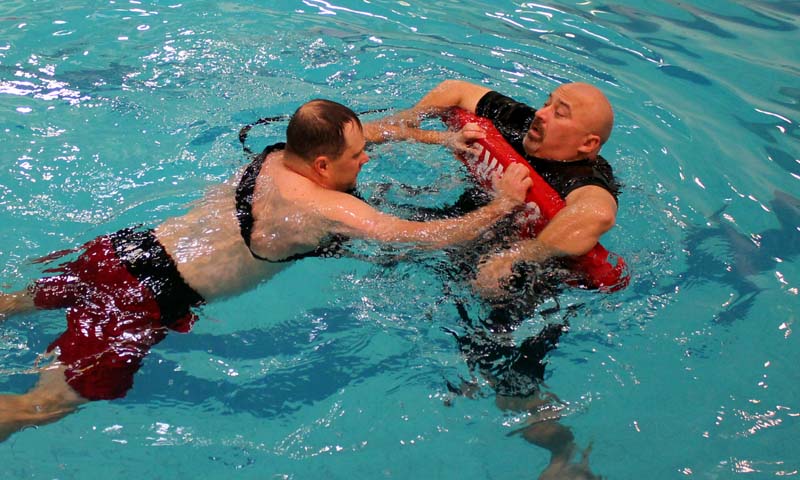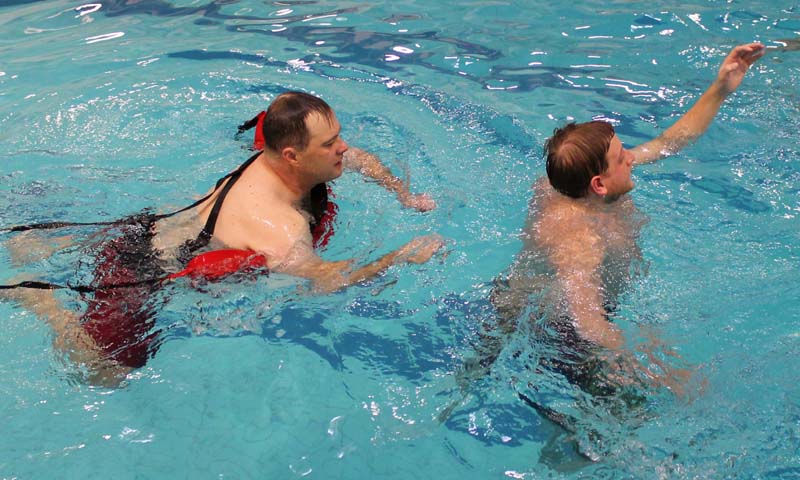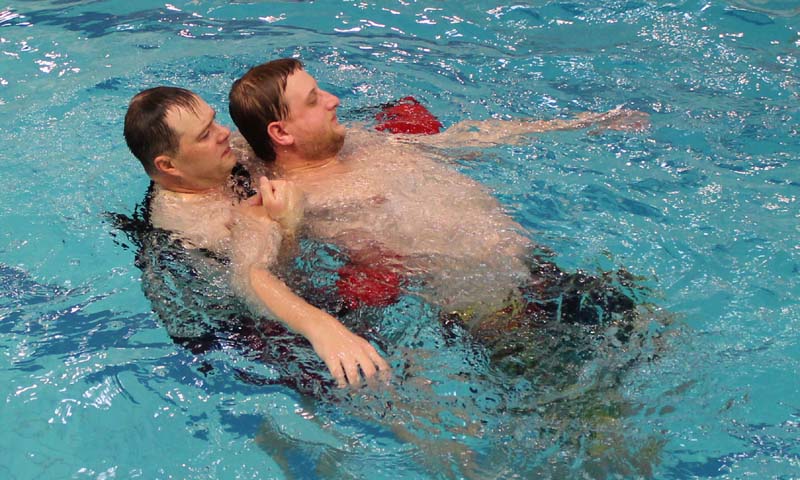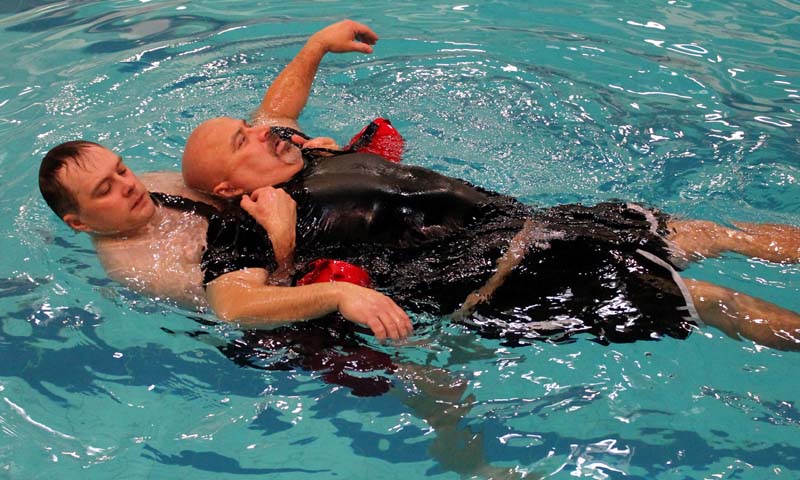Front Approach

| Approach the victim from the front. A lifeguard then takes the rescue tube and places it underneath the victim’s armpits. While keeping their arms fully extended, the lifeguard then kicks the victim to the nearest wall or designated exit point. |
Rear Approach

| A lifeguard approaches the victim from behind and places the rescue tube at a minimum underneath the victim’s back. |

| The lifeguard pulls the victim onto the rescue tube. To prevent injury, a lifeguard should make sure their head is off to one side of the victim’s to make sure they are not struck in the face by the victim when placing them on the tube. |

| Once the victim is on the rescue tube, the lifeguard kicks to the nearest wall or designated exit point. |
Notes:
- In most cases, the ideal placement of the rescue tube is at the lower part of the victim’s back. Placing the rescue tube this low does a better job of supporting the victim. It also allows the victim’s feet to come up near the surface and a lifeguard has a much easier time moving a victim to the side.
- The active drowning victim skills can also be used for distressed swimmers
- Be sure to support the victim so their mouth and nose are out of the water.
